|
Books Should Be Free Loyal Books Free Public Domain Audiobooks & eBook Downloads |
|
|
Books Should Be Free Loyal Books Free Public Domain Audiobooks & eBook Downloads |
|
War Stories |
|---|
|
Book type:
Sort by:
View by:
|
By: Robert W. Chambers (1865-1933) | |
|---|---|
 The Maids of Paradise
The Maids of Paradise
| |
By: Roger Casement (1864-1916) | |
|---|---|
 The Crime Against Europe A Possible Outcome of the War of 1914
The Crime Against Europe A Possible Outcome of the War of 1914
| |
By: Romain Rolland (1866-1944) | |
|---|---|
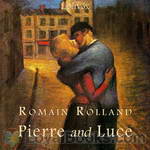 Pierre and Luce
Pierre and Luce
Pierre and Luce were an unlikely young pair who found themselves in the chaos of Paris during the war; Pierre, the shy, recently conscripted pacifist, and Luce, the free spirited artist in training, and both confused about the things going on around them. Why were these war birds flying overhead? Why these warning sirens, and occasional bombs exploding in the distance? Why did the government leaders, who didn't even know one another, hate and destroy so much? Why did these two delicate young adults find each other now? This story takes place between January 30 and Good Friday, May 29, 1918. (Introduction by Roger Melin) | |
By: Ross Kay | |
|---|---|
 Fighting in France
Fighting in France
| |
By: Rudyard Kipling | |
|---|---|
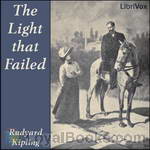 The Light that Failed
The Light that Failed
This novel, first published in 1890, follows the life of Dick Heldar, a painter. Most of the novel is set in London, but many important events throughout the story occur in Sudan or India. It was made into a 1916 film with Jose Collins and a 1939 film by Paramount starring Ronald Colman. | |
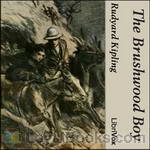 The Brushwood Boy
The Brushwood Boy
The experiences in public school, Sandhurst and military life in India of Major George Cottar together with his adventures in the dream world he discovers and frequents. | |
 Sea Warfare
Sea Warfare
| |
 France At War: On the Frontier of Civilization
France At War: On the Frontier of Civilization
In 1915, as the "Great War" (World War 1) entered its second year Rudyard Kipling made a journalistic tour of the front, visiting French armed forces. By then he was already winner of the Nobel Prize for Literature (the first writer in English to be so honoured). He published his observations in articles in the Daily Telegraph in England, and in the New York Sun. At that stage of the war nationalistic sentiments were running high but the true cost of war was beginning to be understood "at home"... | |
 The Eyes of Asia
The Eyes of Asia
| |
 Fleet In Being; Notes Of Two Trips With The Channel Squadron
Fleet In Being; Notes Of Two Trips With The Channel Squadron
[Kipling] became involved in the debate over the British response to the rise in German naval power known as the Tirpitz Plan to build a fleet to challenge the Royal Navy, publishing a series of articles in 1898 which were collected as A Fleet in Being. And as always with Kipling there is that wonderful sardonic humor and attention to the lower orders of being. | |
 Fringes Of The Fleet
Fringes Of The Fleet
During the war (WWI), [Kipling] wrote a booklet The Fringes of the Fleet containing essays and poems on various nautical subjects of the war. Some of the poems were set to music by English composer Edward Elgar. | |
 New Army in Training
New Army in Training
Kipling's brief assessment of the British New Army being assembled to fight in the Great War. Concerns itself with training and logistics but more importantly with the human side of the vast collection of new battalions. These come from throughout the Empire, including Canada, India, and other territories. - Summary by KevinS | |
By: Rupert Hughes (1872-1956) | |
|---|---|
 The Cup of Fury A Novel of Cities and Shipyards
The Cup of Fury A Novel of Cities and Shipyards
| |
By: Ruth Pierce | |
|---|---|
 Trapped in 'Black Russia' Letters June-November 1915
Trapped in 'Black Russia' Letters June-November 1915
| |
By: Ruth Royce | |
|---|---|
 The Children of France A Book of Stories of the Heroism and Self-sacrifice of Youthful Patriots of France During the Great War
The Children of France A Book of Stories of the Heroism and Self-sacrifice of Youthful Patriots of France During the Great War
| |
By: Rutherford George Montgomery (1896-) | |
|---|---|
 A Yankee Flier Over Berlin
A Yankee Flier Over Berlin
| |
By: S. (Sarah) Macnaughtan (1864-1916) | |
|---|---|
 My War Experiences in Two Continents
My War Experiences in Two Continents
| |
By: S. E. (Samuel E.) Chapman | |
|---|---|
 Doctor Jones' Picnic
Doctor Jones' Picnic
| |
By: S. J. Wilson | |
|---|---|
 The Seventh Manchesters July 1916 to March 1919
The Seventh Manchesters July 1916 to March 1919
| |
By: Saki | |
|---|---|
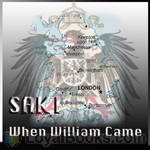 When William Came
When William Came
We have had many novels about alternate histories, often of the ‘What would have happened if Hitler had won the war’ type and this is another – except that this one is set in 1913 and the ‘William’ of the title is that old bogeyman ‘Kaiser Bill’. For some reason, at the height of Britain’s power, the fear of invasion was common at that time. (See ‘The Riddle of the Sands’, ‘The Battle of Dorking’, ‘Spies of the Kaiser’ or even ‘The War of the Worlds’)WARNING:- Contains mild anti-semitism and jingoism typical of the period | |
By: Samuel H. Fletcher | |
|---|---|
 History of Company A, Second Illinois Cavalry
History of Company A, Second Illinois Cavalry
The purpose of this sketch is to keep green the memory of that little band of men known as Company A, of the Second Illinois Cavalry, who fought in the Civil War. | |
By: Samuel Madden (1686-1765) | |
|---|---|
 Reign of George VI, 1900-1925: A Forecast Written in the Year 1763
Reign of George VI, 1900-1925: A Forecast Written in the Year 1763
Imagine a world in which there were no major revolutionary upheavals , there was no Victorian Age, the Great War went unfought. No Cold War, no United States, no Soviet Union; in short, no world as we have known it. Such is the vision presented in this counterfactual historical work.Originally written by Samuel Madden in 1763, the work is a prospective look at events in Europe from 1900-1925, the reign of Madden's "George VI." Taking the social, political, and economic trends of the eighteenth century and projecting their impact in the twentieth, this work is written in the style of a history of the first quarter of the twentieth century... | |
By: Sarah Emma Edmonds (1841-1898) | |
|---|---|
 Nurse and Spy in the Union Army
Nurse and Spy in the Union Army
The “Nurse and Spy” is simply a record of events which have transpired in the experience and under the observation of one who has been on the field and participated in numerous battles—among which are the first and second Bull Run, Williamsburg, Fair Oaks, the Seven days in front of Richmond, Antietam, and Fredericksburg—serving in the capacity of “Spy” and as “Field Nurse” for over two years.While in the “Secret Service” as a “Spy,” which is one of the most hazardous positions in the army—she penetrated the enemy’s lines, in various disguises, no less than eleven times; always with complete success and without detection... | |
By: Sarah Morgan Dawson (1842-1909) | |
|---|---|
 A Confederate Girl's Diary
A Confederate Girl's Diary
Sarah Morgan Dawson was a young woman of 20 living in Baton Rouge, Louisiana, when she began this diary. The American Civil War was raging. Though at first the conflict seemed far away, it would eventually be brought home to her in very personal terms. Her family's loyalties were divided. Sarah's father, though he disapproved of secession, declared for the South when Louisiana left the Union. Her eldest brother, who became the family patriarch when his father died in 1861, was for the Union, though he refused to take up arms against his fellow Southerners... | |
By: Sewell Ford (1868-1946) | |
|---|---|
 Torchy and Vee
Torchy and Vee
| |
By: Sextus Julius Frontinus (40-103) | |
|---|---|
 Stratagems and The Aqueducts of Rome
Stratagems and The Aqueducts of Rome
Frontinus' Stratagems is a collection of examples of military stratagems from Greek and Roman history, which the author comments based on his own experience as a general in Germania. Many of the stories he tells can also be found in other Roman authors like Valerius Maximus and Livy. His most famous work however is De aquaeductu, The Aqueducts of Rome, an official report to the emperor on the state of the aqueducts of Rome, in two books. It presents a history and description of all the nine aqueducts that provided the water-supply of Rome in the first century, as well as information about the laws relating to its use and maintenance, and the quality of water delivered by each. | |
By: Siegfried Sassoon (1886-1967) | |
|---|---|
 War Poems of Siegfried Sassoon
War Poems of Siegfried Sassoon
Siegfried Sassoon was one of the first to write poetry about the brutal reality of war, based on his real-life experiences in the trenches. He served in World War I on the Western Front and was awarded the Military Cross for bravery under fire. However, he later became a convicted pacifist, threw his Military Cross into the Mersey river, and continued to write and publish poems and political statements against the war. His poems capture the despair he felt towards the war overall, and he paints vivid word pictures that make the reader "pray you'll never know, the hell where youth and laughter go"... | |
By: Sir Arthur Conan Doyle (1859-1930) | |
|---|---|
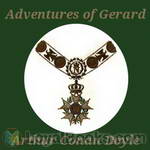 The Adventures of Gerard
The Adventures of Gerard
These lesser known stories were penned by Conan Doyle during the period between killing off Sherlock Holmes in 1893 and reluctantly resurrecting him some ten years later. The swashbuckling, eponymous hero, Etienne Gerard, is one of Napoleon's gallant French Hussars, who considers himself the finest of them all. Through these "Boys Own Adventures", Conan Doyle pokes gentle fun at both the French and the English. This is the second volume containing eight adventures. | |
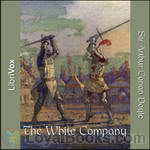 The White Company
The White Company
Set during the Hundred Years’ War with France, The White Company tells the story of a young Saxon man who is learning what it is to be a knight. Raised by Cistercian Monks and rejected by a violent elder brother, Alleyn Edricson takes service with one of the foremost knights in the country. When Alleyn falls in love with the knight’s daughter, he must prove himself to be a courageous and honourable knight before he can win her hand. Alleyn and his friends set forth with the other men-at-arms to join Prince Edward in Bordeaux, from where they will take part in the Prince’s campaign into Spain... | |
 Visit to Three Fronts: June 1916
Visit to Three Fronts: June 1916
In the course of May 1916, the Italian authorities expressed a desire that some independent observer from Great Britain should visit their lines and report his impressions. It was at the time when our brave and capable allies had sustained a set-back in the Trentino owing to a sudden concentration of the Austrians, supported by very heavy artillery. I was asked to undertake this mission. In order to carry it out properly, I stipulated that I should be allowed to visit the British lines first, so that I might have some standard of comparison... | |
 The Great Boer War
The Great Boer War
| |
 The War in South Africa Its Cause and Conduct
The War in South Africa Its Cause and Conduct
| |
 Green Flag and Other Stories of War and Sport
Green Flag and Other Stories of War and Sport
Arthur Conan Doyle was deeply affected by the many wars fought during his lifetime. As many other writers, he used the material for short stories, a collection of which is presented here. | |
By: Sir Edward Shepherd Creasy (1812-1878) | |
|---|---|
 Fifteen Decisive Battles of the World
Fifteen Decisive Battles of the World
This work is Edward Creasy's best known fundamental work of history. It describes in detail 15 battles of world history, beginning with the Battle of Marathon of 490 BC and ending with the Battle of Waterloo of 1815. Each chapter is illustrated with rich historical detail and a timeline of events. | |
By: Sir Stephen King-Hall | |
|---|---|
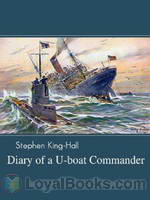 Diary of a U-boat Commander
Diary of a U-boat Commander
The infamous U boats deployed by Germany in the two World Wars have spawned several works of fiction and non-fiction. These deadly vessels were not just efficient and lethal killing machines, but they were also used very effectively in economic blockades. They were positioned primarily to obstruct the conveyance of fuel, food and other essential supplies which the enemy needed to sustain the war effort. In the Diary of a U Boat Commander, the author, Stephen King-Hall draws upon his vast personal experiences as a naval officer in World War I... | |
By: Smedley Butler (1881-1940) | |
|---|---|
 War Is a Racket
War Is a Racket
Marine Maj. Gen. Smedley Butler's expose of American Corporate Imperialism. Butler said, “I served in all commissioned ranks from second lieutenant to Major General. And during that period I spent most of my time being a high-class muscle man for Big Business, for Wall Street, and for the bankers. In short, I was a racketeer for capitalism. I suspected I was just part of the racket all the time. Now I am sure of it.” - Summary by John Greenman and https://www.americanswhotellthetruth.org/portraits/major-general-smedley-butler | |
By: Spenser Wilkinson (1853-1937) | |
|---|---|
 Britain at Bay
Britain at Bay
| |
 Lessons of the War Being Comments from Week to Week to the Relief of Ladysmith
Lessons of the War Being Comments from Week to Week to the Relief of Ladysmith
| |
By: Stapleton Martin (1846-1922) | |
|---|---|
 Anna Seward and Classic Lichfield
Anna Seward and Classic Lichfield
| |
By: Stéphane Lauzanne (1874-) | |
|---|---|
 Fighting France
Fighting France
| |
By: Stephen Crane (1871-1900) | |
|---|---|
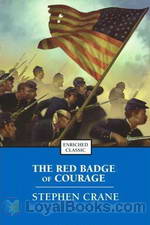 The Red Badge of Courage
The Red Badge of Courage
The Red Badge of Courage is a fiction that tells the story of a soldier named Henry Fleming during the American Civil War. The novel gained widespread praise from critics and was also a commercial success shortly after its release and made Stephen Crane an instant celebrity at the young age of 24. In the novel, Henry was one of the enlisted soldiers in the 304th New York Regiment. He flees from battle in one of the skirmishes they had against the Confederates and to hide his cowardice, he attempted to inflict a wound to himself which is referred to as the “red badge of courage... | |
 Wounds In The Rain; War Stories
Wounds In The Rain; War Stories
Eleven stories of war by the author of The Red Badge of Courage. Stephen Crane was an American author. He is recognized by modern critics as one of the most innovative writers of his generation. Crane's writing is characterized by vivid intensity, distinctive dialects, and irony. Common themes involve fear, spiritual crises and social isolation. His writing made a deep impression on 20th-century writers, most prominent among them Ernest Hemingway, and is thought to have inspired the Modernists and the Imagists. | |
By: Steve Rohrer | |
|---|---|
 Project Trinity 1945-1946
Project Trinity 1945-1946
| |
By: Stuart Walcott (1896-1917) | |
|---|---|
 Above the French Lines
Above the French Lines
A collection of letters written by Stuart Walcott while training to be an aviator in France to prepare for combat. Walcott died in his first aerial combat after first downing a German bi-plane. - Summary by KevinS | |
By: Susan Glaspell (1876-1948) | |
|---|---|
 Visioning , A Novel
Visioning , A Novel
"The Visioning, Susan Glaspell's second novel, tells about Katie Jones, a young woman who lives in the comfortable world she knows with a charming circle of friends. Her brother is an army officer, and her uncle lives in Washington. The world she knows is the world they let her see. Until Anne comes into the picture. Katie saves Anne from killing herself. Katie invents a story about Anne, a story which suits Katie's world, but what would she do, and feel, when she discovers the truth? The story focuses around Katie's eye opening experiences and her search for place and meaning in the new world she slowly discovers... | |
By: Susan Warner (1819-1885) | |
|---|---|
 Wych Hazel
Wych Hazel
| |
By: Sydney George Fisher (1856-1927) | |
|---|---|
 The American Revolution and the Boer War, An Open Letter to Mr. Charles Francis Adams on His Pamphlet "The Confederacy and the Transvaal"
The American Revolution and the Boer War, An Open Letter to Mr. Charles Francis Adams on His Pamphlet "The Confederacy and the Transvaal"
| |
By: T. C. (Thomas Charles) Bridges (1868-) | |
|---|---|
 On Land and Sea at the Dardanelles
On Land and Sea at the Dardanelles
| |
By: T. G. (Theophilus Gould) Steward (1843-1924) | |
|---|---|
 The Colored Regulars in the United States Army
The Colored Regulars in the United States Army
| |
By: Talbot Mundy (1879 -1940) | |
|---|---|
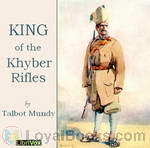 King of the Khyber Rifles
King of the Khyber Rifles
Athelstan King is a British Secret Agent stationed in India at the beginning of WWI. He is attached to the Khyber Rifles regiment as a cover, but his real job is to prevent a holy war. "To stop a holy war single-handed would be rather like stopping the wind--possibly easy enough, if one knew the way." King is ordered to work with a mysterious and powerful Eastern woman, Yasmini. Can King afford to trust her? Can he afford not to? (Introduction by Brett W. Downey) | |
 Hira Singh : when India came to fight in Flanders
Hira Singh : when India came to fight in Flanders
| |
By: Taylor H. Greenfield | |
|---|---|
 The Sword and the Atopen
The Sword and the Atopen
| |
By: Temple Bailey (-1953) | |
|---|---|
 The Tin Soldier
The Tin Soldier
| |
By: Theodore Paullin | |
|---|---|
 Introduction to Non-Violence
Introduction to Non-Violence
| |
By: Theodore Roosevelt (1858-1919) | |
|---|---|
 The Naval War of 1812
The Naval War of 1812
Somewhat detailed history of naval engagements between the United States and England during the War of 1812, from a decidely American perspective. Completed by the author as a young man at age 24. After 120 years, it remains a standard study of the war. | |
 Rough Riders
Rough Riders
Theodore Roosevelt's personal account of The Rough Riders, the name affectionately bestowed on the 1st United States Volunteer Cavalry, one of three such regiments raised in 1898 for the Spanish-American War and the only one to see action. Roosevelt, serving first as Lt. Colonel and 2nd in command, gives a rousing depiction of the men and horses, equipment, talent, their trip to Cuba, battle strategies, losses, injuries and victories. He says: "In all the world there could be no better material for soldiers than that afforded by these grim hunters of the mountains, these wild rough riders of the plains ... | |
By: Theodore Sutro (1845-1927) | |
|---|---|
 Thirteen Chapters of American History represented by the Edward Moran series of Thirteen Historical Marine Paintings
Thirteen Chapters of American History represented by the Edward Moran series of Thirteen Historical Marine Paintings
| |
By: Theodore Winthrop (1828-1861) | |
|---|---|
 Theodore Winthrop: A Civil War Narrative Aborted by Death
Theodore Winthrop: A Civil War Narrative Aborted by Death
Theodore Winthrop was a charismatic writer, lawyer, and world traveler. In the New York Seventh Regiment, he was one of the first Union officers killed in the American Civil War. He wrote two articles for The Atlantic Monthly, the first of an intended series on the nascent civil war. He was killed in the Battle Of Big Bethel in June 1861 before he finished the third article. This recording consists of the two finished articles and the Atlantic Monthly obituary which itself contains the third article. These articles are from The Atlantic Monthly for June 1861, July 1861, and August 1861. Note: In article three, “contraband” means African Americans. - Summary by david wales | |
By: Thomas E. Taylor | |
|---|---|
 Running the Blockade
Running the Blockade
The first-person experiences and adventures of blockade runner during the American civil war. - Summary by Delmar H. Dolbier | |
By: Thomas Erskine Holland (1835-1926) | |
|---|---|
 Letters to "The Times" upon War and Neutrality (1881-1920)
Letters to "The Times" upon War and Neutrality (1881-1920)
| |